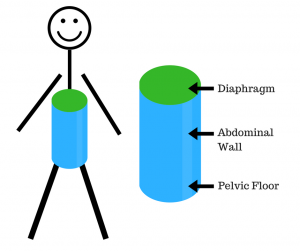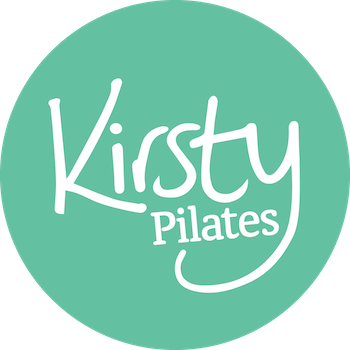How did you get on with the pelvic tilting exercise last week?
This week we are going to focus on finding your deep abdominal muscles. They are there, I promise!
Core Cylinder
 Your core is made up of a group of muscles that form a cylinder in the centre of the body.
Your core is made up of a group of muscles that form a cylinder in the centre of the body.
It consists of the diaphragm, pelvic floor and abdominal wall. Together they support your spine and help with balance and keeping you upright.
When core stability is poor, your spine doesn’t have enough support to maintain good posture and other muscles have to work harder to keep you upright.
This can lead to slouching, joint instability and poor posture. Longer term it can lead to neck and shoulder pain, muscle tension, back pain, injury, fatigue, bladder control problems, digestive problems, headaches and joint pain.
This week we are going to focus on the deep muscles of the abdominal wall. In the coming weeks we will also cover the diaphragm/breathing and pelvic floor.
How to switch on your deep abdominal muscles
You can do this standing or lying on your back with knees bent. Find your hip bones and place 2 fingers just slightly on the inside of them. Cough a couple of times and you will feel your deep abdominal muscles contract forcefully.
These muscles only need to be contracted about 20-30%. Any more and you may produce unwanted activity from the muscles that sit on top and do not play a role in core stability.
You can practice switching these muscles on when standing or laying on your back with knees bent and with a neutral pelvis.
- Place 2 fingers just slightly in from your hip bones.
- Take a few breaths in and out. Try to relax your abdominal muscles.
- Take another breath in. As you breathe out contract the deep abdominals by drawing the muscles between your hip bones closer together – remember only gently.
- Practice holding this contraction in the lower stomach area for 10 seconds whilst continuing to breathe normally.
Homework Exercise
Standing Sways is a useful exercise to feel your core muscles switch on and off. Check that there is no movement in your lower back and that you move only from your feet. Closing your eyes can be helpful to feel your abdominal and lower back muscles contract and relax.

